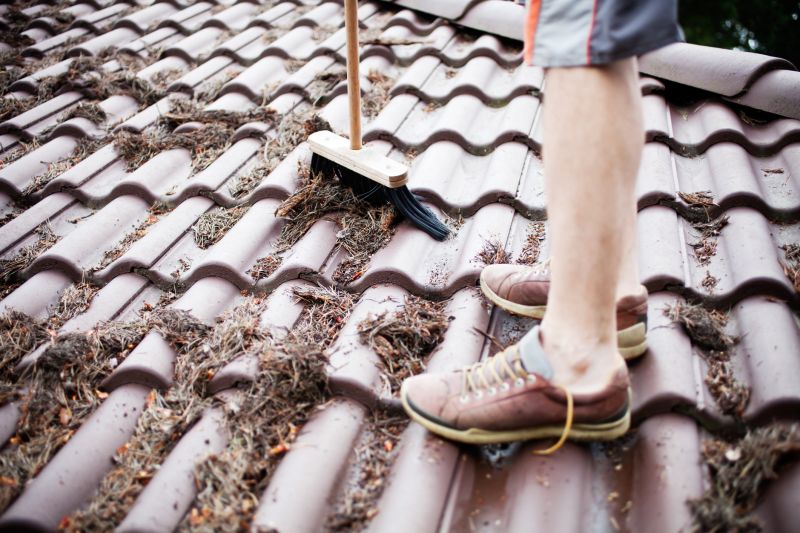Favorite Products For Roof Pine Needle Clearing And Maintenance
Browse popular options that help homeowners effortlessly clear pine needles and extend the lifespan of their roofs.
 Removing pine needles from roofs can be a challenging and time-consuming task, especially when dealing with extensive accumulation. Pine needles tend to gather in gutters, along roof valleys, and in hard-to-reach areas, potentially obstructing water flow and causing damage over time. To effectively manage this, homeowners and maintenance professionals often turn to specialized products designed to safely and efficiently clear pine debris from rooftops.
Removing pine needles from roofs can be a challenging and time-consuming task, especially when dealing with extensive accumulation. Pine needles tend to gather in gutters, along roof valleys, and in hard-to-reach areas, potentially obstructing water flow and causing damage over time. To effectively manage this, homeowners and maintenance professionals often turn to specialized products designed to safely and efficiently clear pine debris from rooftops.
Top Overall Option
Extendable Roof Rake
An extendable roof rake offers a versatile and ergonomic solution for removing pine needles from roofs. Its adjustable length allows users to reach high or difficult areas without the need for ladders or climbing, enhancing safety and convenience. Designed with lightweight materials and a wide, sturdy head, it can effectively dislodge debris while minimizing roof damage. This tool is suitable for various roof pitches and materials, making it a popular choice for homeowners seeking a reliable, all-around product for pine needle removal.
Types of Products For Roof Pine Needle Removals
Manual Roof Rakes
Long-handled manual rakes designed specifically for roof debris removal, allowing reach without ladder use.
Extendable Roof Rakes
Adjustable-length rakes that can be extended to access high or difficult areas safely.
Roof Cleaning Brushes
Wide brushes with long handles for sweeping pine needles and other debris from roof surfaces.
Leaf Blow Fans
Powerful blowers that can clear pine needles from roofs and gutters efficiently.
Pressure Washers
High-pressure devices capable of removing stubborn debris, dirt, and moss from roofing materials.
Gutter Cleaning Tools
Specialized tools to clear gutters and downspouts of pine needles and debris.
Roof Vacuum Systems
Vacuum devices designed for safe debris removal from rooftops, reducing physical strain.
Telescoping Pole Attachments
Interchangeable heads that attach to telescoping poles for versatile roof cleaning tasks.
Roof Scrapers
Tools with gentle scraping edges to lift and remove pine needles without damaging roofing material.
Electric Leaf Blowers
Corded or cordless blowers suitable for quick and efficient pine needle removal on roofs.
Battery-Powered Roof Cleaners
Portable, battery-operated devices designed for ease of use and mobility during cleaning tasks.
Roof Cleaning Kits
Complete sets including various tools for comprehensive roof pine needle removal.
Popular Choices
A highly favored tool for reaching high roof areas safely and efficiently.
Popular for quick removal of pine needles from rooftops and gutters.
Versatile and easy to use for sweeping debris from various roof surfaces.
Effective for removing accumulated pine needles from gutters.
Convenient for debris collection without the need for manual raking.
All-in-one solutions that include multiple tools for comprehensive roof maintenance.
Preferred for its ease of use and adaptability to different roof pitches.
Recommended for stubborn debris and moss removal on roofing surfaces.
Useful for gently lifting pine needles without damaging shingles.
Popular for its reach and versatility in roof cleaning tasks.
Various tools and equipment are available to facilitate pine needle removal, including manual tools like roof rakes and extendable brushes, as well as powered options such as leaf blowers and pressure washers. Choosing the right product depends on the roof type, the extent of debris, and personal preference for manual versus powered solutions. Proper selection can help prevent damage to roofing materials while ensuring thorough cleaning.
Safety considerations are paramount when working on roofs. Using lightweight, ergonomic tools can reduce strain and improve safety, especially when working on steep or high roofs. Additionally, some products are designed with safety features like non-slip grips or extendable handles to minimize the need for dangerous climbs or awkward positions. Regular maintenance with the appropriate tools can extend the lifespan of roofing materials and maintain the aesthetic appeal of the property.
Incorporating the right products into your roof maintenance routine can streamline the process, saving time and effort. Whether you prefer manual tools for precision or powered devices for efficiency, there are options suited for various roof types and debris levels. Investing in quality equipment can make pine needle removal safer, more effective, and less labor-intensive.
Key Buying Considerations
- Roof type and pitch: Choose tools compatible with your roof's material and slope to ensure safety and effectiveness.
- Reach and extension: Consider adjustable or telescoping options to access high or hard-to-reach areas comfortably.
- Material and durability: Select tools made from sturdy, weather-resistant materials for longevity.
- Weight and ergonomics: Opt for lightweight, well-designed tools to reduce fatigue during use.
- Power source: Decide between manual, electric, or battery-powered devices based on convenience and power needs.
- Surface sensitivity: Use gentle tools like soft brushes or scrapers to avoid damaging shingles or tiles.
- Safety features: Look for tools with non-slip grips, secure handles, and safety locks where applicable.
- Ease of storage: Consider compact or foldable tools for easy storage and transport.
- Maintenance requirements: Choose tools that are easy to clean and maintain for long-term use.
- Budget: Balance cost with quality and features to find a suitable option within your budget.
- Environmental conditions: Take into account weather and environmental factors that may affect tool performance.
- Compatibility with accessories: Check if the tool can be used with additional attachments for versatility.
- User reviews and ratings: Research feedback from other users to gauge effectiveness and reliability.
- Availability of replacement parts: Ensure that replacement components are accessible for ongoing maintenance.
This content contains affiliate links and we may earn a commission at no additional cost to you.
